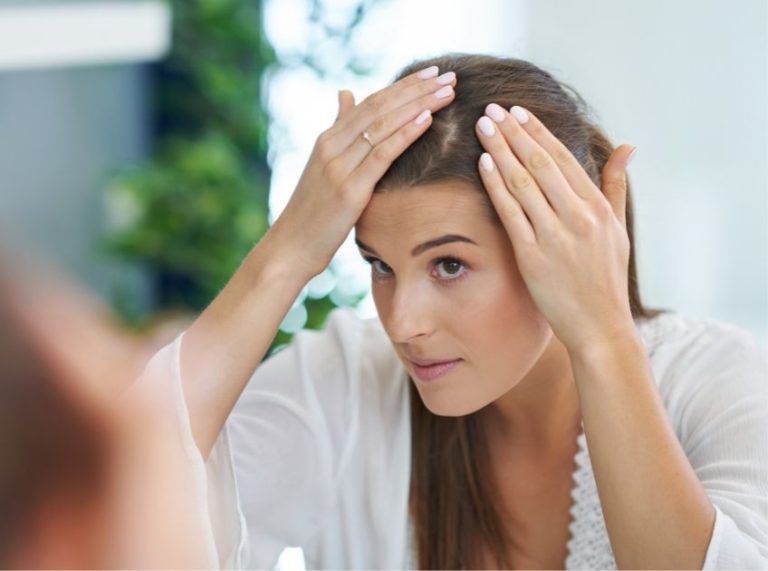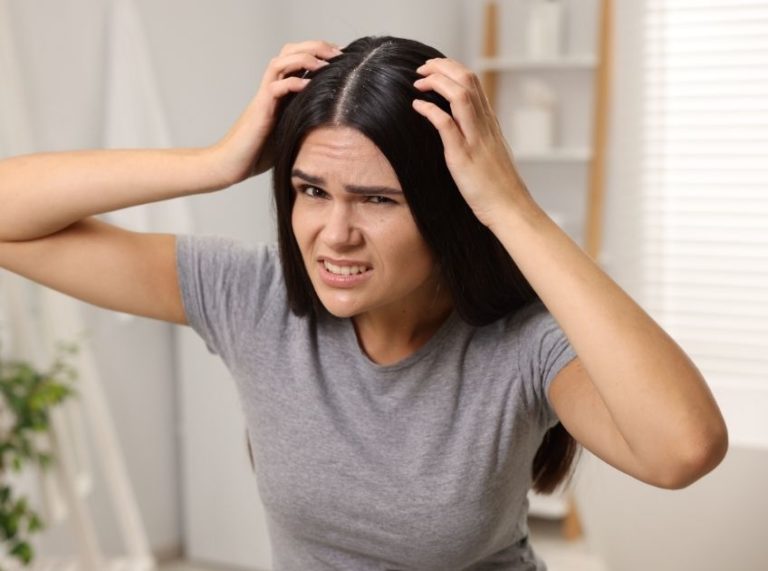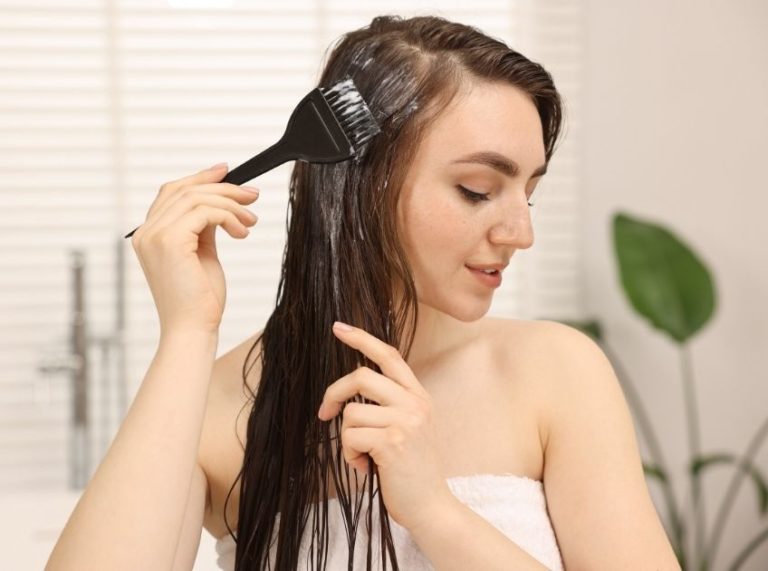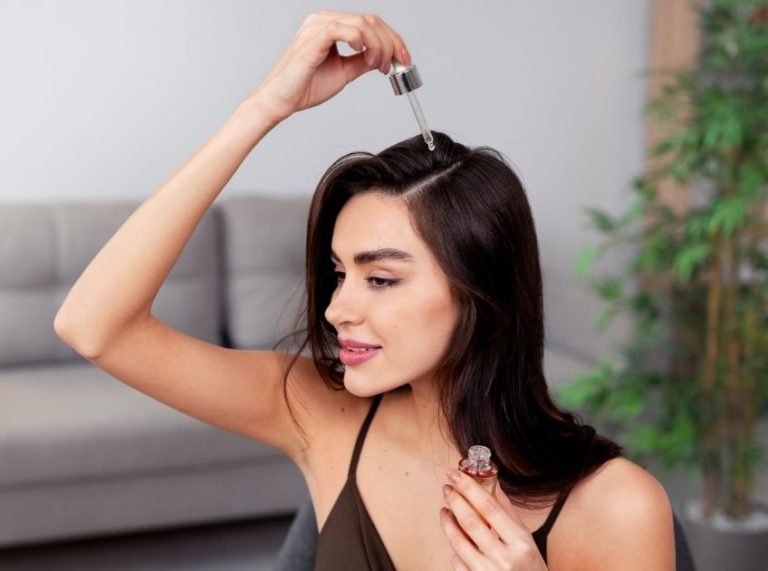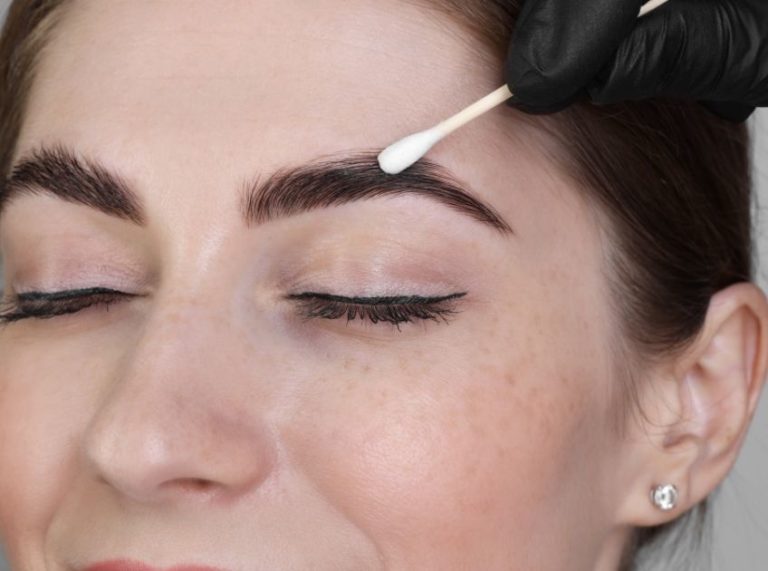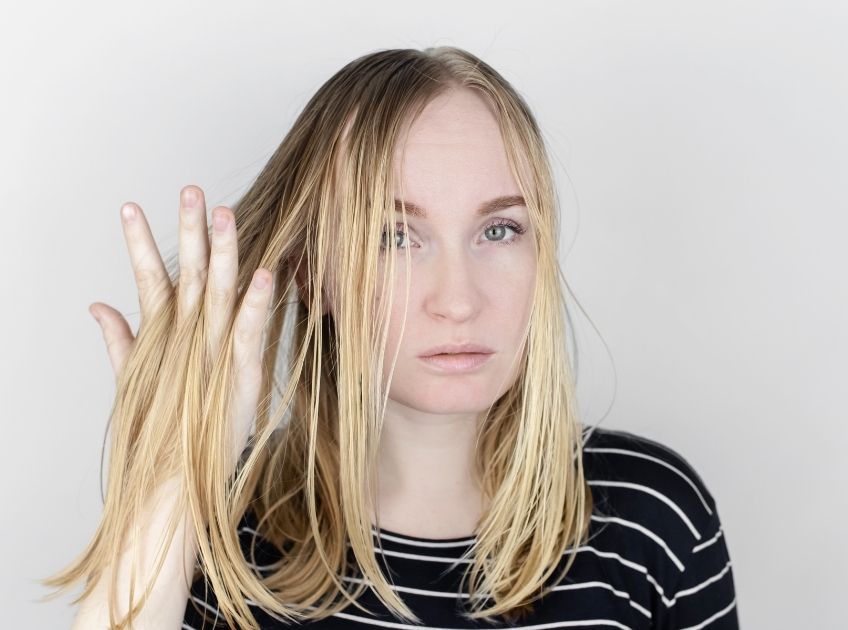
Important: This article is for informational purposes only. Please read our full disclaimer for more details.
Greasy hair isn’t just a cosmetic issue—it’s a biological process influenced by your scalp’s oil glands. The scalp has a high density of sebaceous glands that produce sebum, an oily substance that protects the skin and hair. When these glands produce excess oil, hair begins to look limp, flat, and greasy even within hours of washing.
Scientific studies show that sebum is regulated by hormones—primarily androgens—and external factors like stress, climate, and harsh cleansing methods (1). Genetics also plays a big role: some people naturally have more active sebaceous glands.
Beyond this, the scalp microbiome—made up of bacteria and yeasts—feeds on sebum. When oil increases, microorganisms such as Malassezia multiply, producing byproducts that contribute to greasiness, itching, and buildup.
The key to managing oily hair is balancing—not eliminating—sebum production, and the natural strategies below work precisely toward that goal.
Reset Your Routine: Smarter Washing Habits
How you wash your hair influences oil production more than you may think. These expanded techniques target your scalp’s natural rhythm.
1. Wash Less Frequently: Washing too often strips natural oils, which triggers the scalp to produce more. Dermatologists note that many people with oily hair ironically overwash, making the issue worse.
2. Use Lukewarm Water: Very hot water dissolves natural oils too aggressively. Lukewarm water helps maintain scalp barrier integrity, preventing rebound oiliness.
3. Rinse Thoroughly After Shampooing: Residual shampoo and conditioner can trap dirt and oil, creating a greasy film. Take at least 30–60 seconds to fully rinse the roots.
4. Focus Shampoo on the Scalp: Shampoo is meant for the roots, where oil is produced—not the ends. Overwashing leads to dryness and split ends.
5. Don’t Apply Conditioner to Your Roots: Conditioner is designed for the lengths and tips. Applying it to the roots clogs follicles and adds unnecessary moisture.
6. Alternate Between Clarifying and Gentle Shampoos: A clarifying shampoo removes hard water minerals and product buildup. Too much clarifying, however, triggers dryness and more oil.
7. Avoid Daily Shampooing After Workouts: Sweat is mostly water and salt. Rinsing with water or a co-wash is often enough to refresh your scalp without stripping oils.
8. Try the “Double Shampoo” Method: The first wash removes oil and pollution; the second deep cleanses. This method is dermatologically supported for oily scalps.
9. Replace Heavy Formulas With Lightweight Ones: Thick, creamy shampoos often contain moisturizers that are unsuitable for oily scalps. Gel-based formulas work better.
10. Don’t Wash Hair at Night If You Have an Oily Scalp: Sleeping with slightly damp hair increases moisture and microbial activity on the scalp. Wash in the morning instead for longer-lasting freshness.
Choose Wisely: Products That Keep Oil Under Control
11. Switch to a Sulfate-Free Shampoo:
- Sulfates (SLS, SLES) are effective cleaners, but they can strip too much oil.
- Research shows that over-stripping leads to increased sebum production.
12. Look for Zinc Pyrithione or Salicylic Acid:
- Zinc pyrithione controls scalp microbes, while salicylic acid exfoliates dead skin and excess oil.
- Clinical studies confirm that SA reduces sebum excretion rate.
13. Avoid Silicone-Heavy Conditioners:
- Silicones like dimethicone form a film over the hair, trapping oil and dust.
- This leads to greasier hair between washes.
14. Use Lightweight Leave-Ins Instead of Creamy Serums:
- Water-based leave-ins won’t weigh your hair down.
- Avoid oils and butter-based products on the scalp.
15. Stay Away from Heavy Oils:
- Oils like coconut, castor, and shea are occlusive.
- These are perfect for dry hair types, but suffocating for oily scalps.
Natural Home Remedies to Absorb and Reduce Oil
These remedies support your scalp’s biology, helping regulate oil production naturally.
16. Apple Cider Vinegar (ACV) Rinse:
- ACV rebalances scalp pH and reduces yeast activity.
- Low pH discourages excessive oil and microbial growth.
- Use weekly for best results.
17. Aloe Vera Gel Mask:
- Aloe vera contains salicylic-like compounds and polysaccharides that reduce oiliness and inflammation.
- Leave on for 15–20 minutes before shampooing.
18. Tea Tree Oil Drops:
- Tea tree oil is antifungal and antibacterial.
- Research shows it significantly reduces Malassezia levels, a common trigger for oily dandruff.
19. Green Tea Rinse:
- Green tea’s EGCG reduces sebum production.
- A 2017 study found that topical green tea reduced scalp oiliness and inflammation.
20. Witch Hazel Scalp Toner:
- Witch hazel tightens pores and reduces excess sebum secretion.
- It also soothes irritation triggered by heat or sweat.
21. Lemon Juice Rinse:
- Lemon offers natural astringent and clarifying properties.
- Always dilute heavily to protect your scalp barrier.
22. Bentonite Clay Mask:
- Bentonite clay absorbs oil, toxins, and impurities from the scalp.
- Use once every 1–2 weeks for deep detox.
23. Baking Soda Paste:
- Works as a natural exfoliant, removing excess sebum and buildup.
- This should be used sparingly to avoid disrupting scalp pH.
24. Black Tea Rinse:
- Black tea contains tannins that tighten pores and reduce sebum output.
- Apply cooled tea to the roots and rinse after 5 minutes.
25. Cornstarch or Rice Flour as Natural Dry Shampoo:
- These powders absorb oil instantly.
- Apply lightly at the roots and brush off thoroughly.
Everyday Lifestyle Habits That Make a Big Difference
- Add these supportive habits to maintain long-term scalp balance.
- Clean your hairbrush weekly to eliminate oil and bacteria buildup.
- Avoid touching your hair—hands carry oils and dirt.
- Switch to silk pillowcases; cotton absorbs oils and increases friction.
- Keep hairstyles loose; pulling hair tight stimulates oil glands.
- Avoid overwearing caps and helmets that trap heat and sweat.
- Eat foods rich in zinc (pumpkin seeds, nuts) and omega-3s to support scalp health.
- Drink enough water to prevent scalp dehydration.
- Manage stress; cortisol increases sebaceous gland activity.
What Science Says About Oily Scalp and Sebum Production
Several scientific insights support why these methods work:
- Sebum is hormonally driven—androgens regulate sebaceous activity, which is why stress and hormonal fluctuations worsen greasiness (1).
- Scalp microbiome balance is crucial—excess sebum feeds Malassezia yeasts, creating buildup, odor, and irritation (2).
- pH-balanced products reduce oiliness—the scalp’s ideal pH (4.5–5.5) minimizes microbial growth and stabilizes sebum production (3).
- Over-cleansing disrupts the scalp barrier—leading to reactive oil secretion. Gentle cleansing preserves natural regulation.
- Antioxidants like EGCG (green tea) reduce inflammation and oil gland activity (4).
- Salicylic acid’s keratolytic action reduces buildup, allowing the scalp to breathe (5).
Frequently Asked Questions (FAQ’S)
1. Why does my hair look greasy just hours after washing?
A. This is likely due to overactive sebaceous glands, hormonal fluctuations, or using the wrong hair products. The scalp may also be reacting to overwashing or harsh shampoos.
2. Does greasy hair cause hair loss?
A. Excess oil doesn’t directly cause hair loss, but buildup can clog follicles, weaken roots, and contribute to inflammation—conditions linked to shedding.
3. What foods should I avoid if I have greasy hair?
A. High sugar foods and high-glycemic diets can increase oil production. Instead, choose foods rich in zinc, omega-3s, and antioxidants.
Greasy hair is manageable once you understand the underlying causes and adopt habits that support scalp balance. With smarter washing techniques, the right products, natural remedies, and healthy lifestyle practices, you can significantly reduce oiliness and enjoy cleaner, fresher hair for longer. If you’d like, I can help you create a custom routine for oily hair based on your scalp type, lifestyle, and hair texture.
